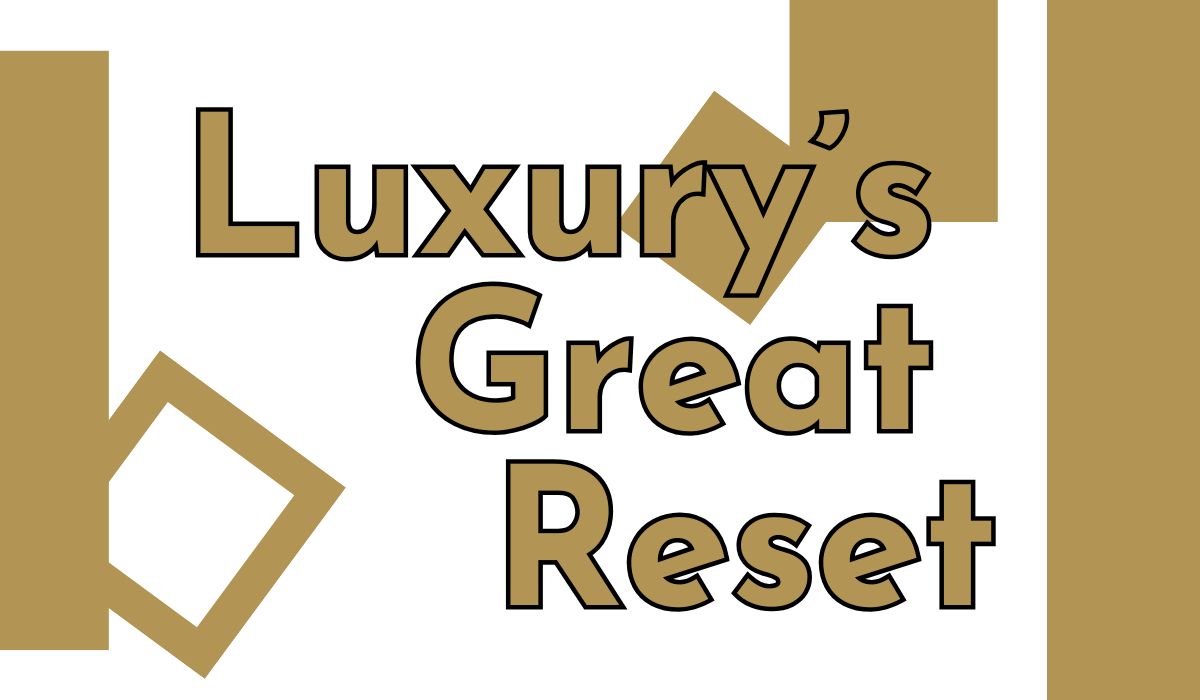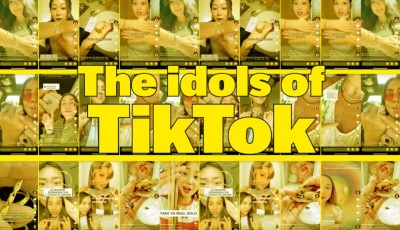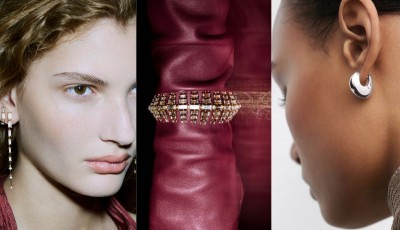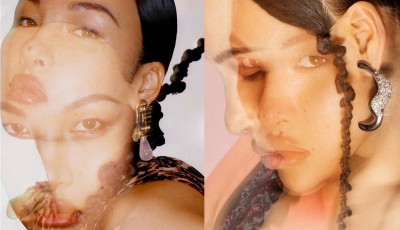Luxury's Great Reset: Challenges and Opportunities Until 2027
The dossier explores The Independents Group’s study, analyzing the ongoing transformations in the luxury market and the strategies needed to address changes in trends, culture, and community
The dossier examines a recent study published by The Independents Group and powered by Karla Otto, Luxury's Great Reset, which reflects on the current state of the luxury industry and the many challenges it will have to face from now until 2027. How will jewelry brands maintain, if not accelerate, desirability in the current market? For this first group-wide whitepaper, the 16 partners of The Independents Group came together to decipher what the luxury sector needs to do to reinvigorate by going beyond the internal dynamics of the industry to interact directly with luxury consumers. Specifically, we report an initial analysis of this study that looks at the trends of the main and future drivers that will influence consumer choices, starting with the perception of the concepts of trends, culture, and community, and how they will evolve over the next two years.
Trends, Culture, Communities. Luxury Tested by New Challenges
According to the Luxury's Great Reset study powered by Karla Otto, the traditional levers for luxury goods foresee significant changes by 2027. Due to evolving codes of status and personal expression, consumers are shifting their attitudes towards a more collective experience, whereby access to luxury is no longer solely through the manifestation of possession, but based on a sense of belonging. Consumers are shifting their perspectives on luxury goods, moving towards more collective access, and away from the traditional concept of status. Overwhelmed by an era of product hyper-abundance, high spenders are increasingly refining their purchasing choices, starting with the use of a new vocabulary in line with their slow transformation. The word “trend” has become a throwaway term and is losing its value, while craftsmanship and creativity are emerging as new purchase motivators, with a preference for items that enrich the buyer from a creative point of view, rather than looking at micro-trends that prioritize speed over process. Even the value of “culture,” which has grown as a purchasing lever over the past five years, is expected to decline in consumer interest. In fact, in the same way as trends, brands should be cautious about putting culture at the center of their marketing strategies and reflect on the elements that define how they can act as a community.
The Decline of Trends: Speed Over Process
The trend concept’s loss of ground is mainly due to the fact that more emphasis was placed on speed over process. Before digitization and the rise of social media, the cyclical nature of cultural trends moved at a more fluid pace. According to the study by The Independents, powered by Karla Otto, trends spread through tastemakers or counter-cultural movements, allowing authentic communities to form around shared identities and beliefs. Being part of these groups also required a lifestyle alignment and possessing objects that defined a sense of belonging. Nowadays, the digital world has accelerated everything. Algorithm sophistication now creates a vacuum effect, diluting individuality in culture and simplifying the information and media we consume. The result is less diversity and a faster turnover of micro-trends. This survey shows how all this has impacted the luxury consumer: globally, the desire to keep up with trends has been steadily decreasing since 2019 and is expected to decrease by a further 6.38% by 2027. Jenna Barnet, CEO of the Sunshine agency, says: “Our digital life exposes us to an endless stream of information: the consumer is overwhelmed and brands are having to work harder to stand out. Consequently, the words trust and curation are now crucial. Reacting to the rhythm of micro-trends has become a guiding star for many businesses looking to tap into the cultural zeitgeist, but our warning is that, while trend-hopping can put you on the map, it can also be seen as a lack of substance, especially in an age where the consumer is increasingly overwhelmed by content.” “Looking for trends on social media should not be done opportunistically,” adds Camille Olivier, co-founder of the social media agency CZTAR. “It should be a chance to create a moment of connection, an opportunity to make the brand’s identity more solid.”
Culture as Status: The Evolving Power of Luxury Communities
As trends gradually become more accessible, luxury consumption is increasingly driven by culture, where luxury is not only an indicator of status but a point of entry into a community. In fact, the study reveals that the concept of “cultural connection” has increased as a primary motivation toward luxury, with an 8.54% growth rate between 2019 and 2024. “Culture is replacing trends, and consumers are starting to see luxury as a culture in which to participate,” says Ed Warren, Chief Creative Officer at Sunshine. “Indeed, the word ‘culture’ has become a currency in the luxury ecosystem and a way to increase consumers' affinity with the brand. The key for brands is to understand the difference between categories and cultures,” Warren continues. “A culture has depth, a tradition. This requires consumers to be hyper-literate in that culture in order to take part in it, which marks a shift from one status, represented solely through an object or a price, to another represented by knowledge,” he concludes. As a result, many brands have decided to expand into the lifestyle and culture world with a series of cross-strategies and activities designed to amplify brand affinity and foster a deep community. However, by 2027, this interest in culture, although still at the peak of the consumer index, is expected to take a slightly downward trend. To remain relevant in the marketplace, brands cannot simply appear in culture. They must be the creators of their own relevance rather than merely participating in an existing conversation. Today's most successful luxury brands are creating layered universes that the Sunshine agency likens to the entertainment industry, such as Star Wars and Marvel, that build worlds with depth and continuity, enabling them to tell new stories while maintaining their own identity, encouraging consumers to connect to create community. “We don't need big ideas; we need lavish ideas that lead people into an environment that is directly connected to the brand's world right from the beginning,” Warren explains. “The more vivid and deep you make your ecosystem, the more you attract people.”
Community and Luxury: Increasingly Curated Communities
The growth of the concept of belonging to a community or group, which is expected to increase by 8.47% globally, is a driver that shows how consumers fundamentally seek a sense of belonging through luxury. “Social media provides access to new communities,” says Olivier from CTZAR. “This did not happen with traditional media where everything was more standardized.” The digital world has opened new doors to building emotional bonds and has given rise to an undergrowth of niche communities that brands should exploit to amplify a growing need. “Everything rotates around community,” says Clémentine Tarnaud McEwan, Chief Business Officer of The Independents Group. “The future of brand communities contrasts with the current focus on mass distribution and virality and will shift towards a more curated approach, favoring experiences that promote intimacy over exposure. It foresees that brands will harness communities with a more local approach in order to create better connections and deeper future-proof relationships.” By strengthening this aspect, brands will have to go beyond consumerism and product towards something deeper where experience is central. “What can you offer them that they cannot buy?” Tarnaud McEwan asks.
Navigating Luxury's Future: Challenges and Opportunities Ahead
In the key markets analyzed, traditional drivers of luxury consumption are evolving from surface status symbols to deeper and more meaningful connections. Consumer desires are also changing from designer clothes and handbags to an appreciation of goods such as art, watches, jewelry, design, as well as experiences and travel. In the future, consumers will seek luxury goods with meaningful stories and identities. They will aim to deepen their understanding of, and relationship with, the objects around them and the events they immerse themselves in. When they spend on luxury, they will not only seek beauty but also personal resonance and cultural enrichment. And they will demand that brands act as entertainers, as visionaries of creative excellence and as protagonists who actively shape and nurture the culture and community around them. For luxury, all this represents a combination of challenges and opportunities. Opportunities for abundant storytelling, creativity, and strong partnerships to reinvigorate and reset a stagnant luxury market.
Trends, Culture, Communities. Luxury Tested by New Challenges
According to the Luxury's Great Reset study powered by Karla Otto, the traditional levers for luxury goods foresee significant changes by 2027. Due to evolving codes of status and personal expression, consumers are shifting their attitudes towards a more collective experience, whereby access to luxury is no longer solely through the manifestation of possession, but based on a sense of belonging. Consumers are shifting their perspectives on luxury goods, moving towards more collective access, and away from the traditional concept of status. Overwhelmed by an era of product hyper-abundance, high spenders are increasingly refining their purchasing choices, starting with the use of a new vocabulary in line with their slow transformation. The word “trend” has become a throwaway term and is losing its value, while craftsmanship and creativity are emerging as new purchase motivators, with a preference for items that enrich the buyer from a creative point of view, rather than looking at micro-trends that prioritize speed over process. Even the value of “culture,” which has grown as a purchasing lever over the past five years, is expected to decline in consumer interest. In fact, in the same way as trends, brands should be cautious about putting culture at the center of their marketing strategies and reflect on the elements that define how they can act as a community.
The Decline of Trends: Speed Over Process
The trend concept’s loss of ground is mainly due to the fact that more emphasis was placed on speed over process. Before digitization and the rise of social media, the cyclical nature of cultural trends moved at a more fluid pace. According to the study by The Independents, powered by Karla Otto, trends spread through tastemakers or counter-cultural movements, allowing authentic communities to form around shared identities and beliefs. Being part of these groups also required a lifestyle alignment and possessing objects that defined a sense of belonging. Nowadays, the digital world has accelerated everything. Algorithm sophistication now creates a vacuum effect, diluting individuality in culture and simplifying the information and media we consume. The result is less diversity and a faster turnover of micro-trends. This survey shows how all this has impacted the luxury consumer: globally, the desire to keep up with trends has been steadily decreasing since 2019 and is expected to decrease by a further 6.38% by 2027. Jenna Barnet, CEO of the Sunshine agency, says: “Our digital life exposes us to an endless stream of information: the consumer is overwhelmed and brands are having to work harder to stand out. Consequently, the words trust and curation are now crucial. Reacting to the rhythm of micro-trends has become a guiding star for many businesses looking to tap into the cultural zeitgeist, but our warning is that, while trend-hopping can put you on the map, it can also be seen as a lack of substance, especially in an age where the consumer is increasingly overwhelmed by content.” “Looking for trends on social media should not be done opportunistically,” adds Camille Olivier, co-founder of the social media agency CZTAR. “It should be a chance to create a moment of connection, an opportunity to make the brand’s identity more solid.”
Culture as Status: The Evolving Power of Luxury Communities
As trends gradually become more accessible, luxury consumption is increasingly driven by culture, where luxury is not only an indicator of status but a point of entry into a community. In fact, the study reveals that the concept of “cultural connection” has increased as a primary motivation toward luxury, with an 8.54% growth rate between 2019 and 2024. “Culture is replacing trends, and consumers are starting to see luxury as a culture in which to participate,” says Ed Warren, Chief Creative Officer at Sunshine. “Indeed, the word ‘culture’ has become a currency in the luxury ecosystem and a way to increase consumers' affinity with the brand. The key for brands is to understand the difference between categories and cultures,” Warren continues. “A culture has depth, a tradition. This requires consumers to be hyper-literate in that culture in order to take part in it, which marks a shift from one status, represented solely through an object or a price, to another represented by knowledge,” he concludes. As a result, many brands have decided to expand into the lifestyle and culture world with a series of cross-strategies and activities designed to amplify brand affinity and foster a deep community. However, by 2027, this interest in culture, although still at the peak of the consumer index, is expected to take a slightly downward trend. To remain relevant in the marketplace, brands cannot simply appear in culture. They must be the creators of their own relevance rather than merely participating in an existing conversation. Today's most successful luxury brands are creating layered universes that the Sunshine agency likens to the entertainment industry, such as Star Wars and Marvel, that build worlds with depth and continuity, enabling them to tell new stories while maintaining their own identity, encouraging consumers to connect to create community. “We don't need big ideas; we need lavish ideas that lead people into an environment that is directly connected to the brand's world right from the beginning,” Warren explains. “The more vivid and deep you make your ecosystem, the more you attract people.”
Community and Luxury: Increasingly Curated Communities
The growth of the concept of belonging to a community or group, which is expected to increase by 8.47% globally, is a driver that shows how consumers fundamentally seek a sense of belonging through luxury. “Social media provides access to new communities,” says Olivier from CTZAR. “This did not happen with traditional media where everything was more standardized.” The digital world has opened new doors to building emotional bonds and has given rise to an undergrowth of niche communities that brands should exploit to amplify a growing need. “Everything rotates around community,” says Clémentine Tarnaud McEwan, Chief Business Officer of The Independents Group. “The future of brand communities contrasts with the current focus on mass distribution and virality and will shift towards a more curated approach, favoring experiences that promote intimacy over exposure. It foresees that brands will harness communities with a more local approach in order to create better connections and deeper future-proof relationships.” By strengthening this aspect, brands will have to go beyond consumerism and product towards something deeper where experience is central. “What can you offer them that they cannot buy?” Tarnaud McEwan asks.
Navigating Luxury's Future: Challenges and Opportunities Ahead
In the key markets analyzed, traditional drivers of luxury consumption are evolving from surface status symbols to deeper and more meaningful connections. Consumer desires are also changing from designer clothes and handbags to an appreciation of goods such as art, watches, jewelry, design, as well as experiences and travel. In the future, consumers will seek luxury goods with meaningful stories and identities. They will aim to deepen their understanding of, and relationship with, the objects around them and the events they immerse themselves in. When they spend on luxury, they will not only seek beauty but also personal resonance and cultural enrichment. And they will demand that brands act as entertainers, as visionaries of creative excellence and as protagonists who actively shape and nurture the culture and community around them. For luxury, all this represents a combination of challenges and opportunities. Opportunities for abundant storytelling, creativity, and strong partnerships to reinvigorate and reset a stagnant luxury market.






